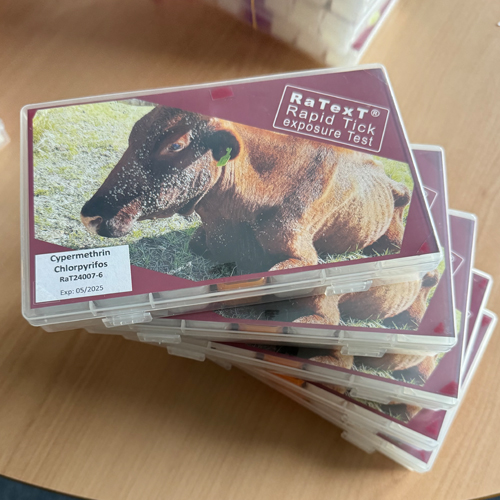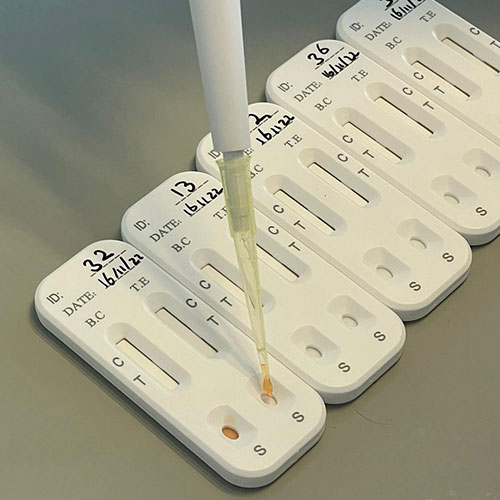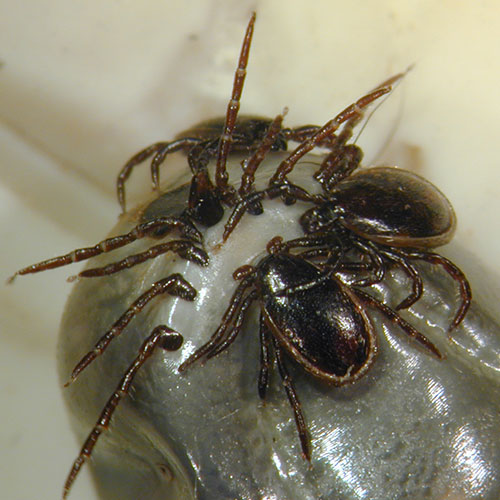Resistance Intensity Test (RIT)
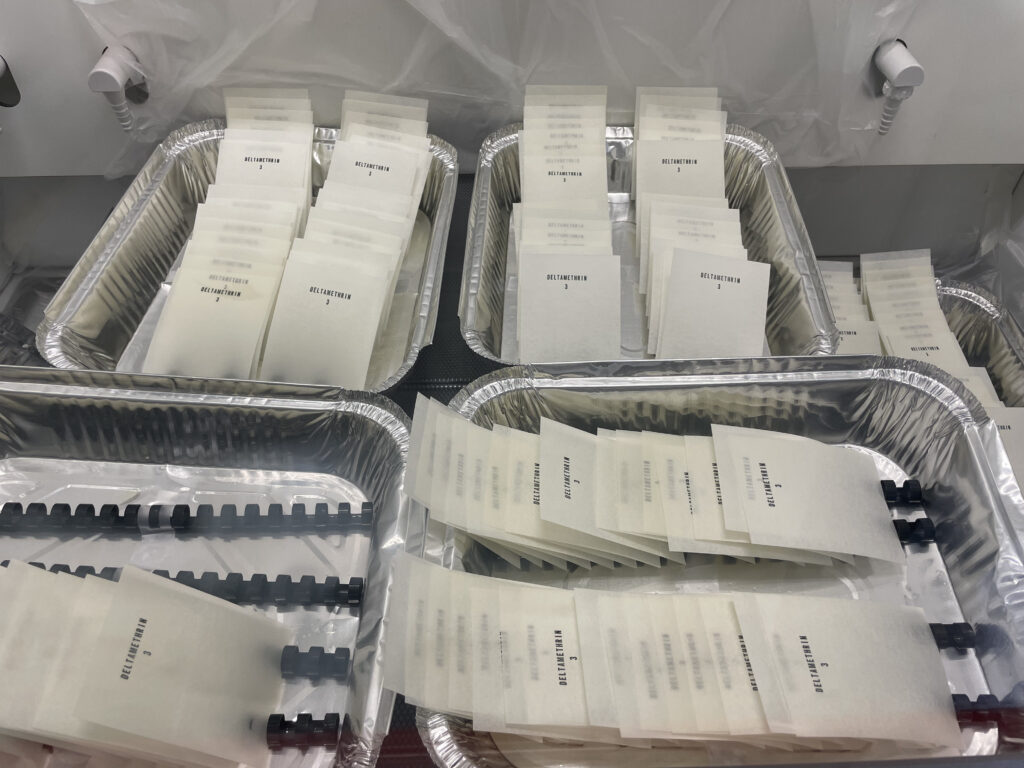
We have adopted the WHO guidelines on insecticide resistance in mosquito vectors to develop the Resistance Intensity Test (RIT) for ticks, which is supplementary to the FAO-recommended larval packet test (LPT). The RIT uses 1x, 5x, and 10x higher concentrations, revealing a low, moderate, and high resistance intensity, respectively. The RIT requires 50% fewer packets than the LPT.
Rapid Tick Exposure Test (RaTexT®)
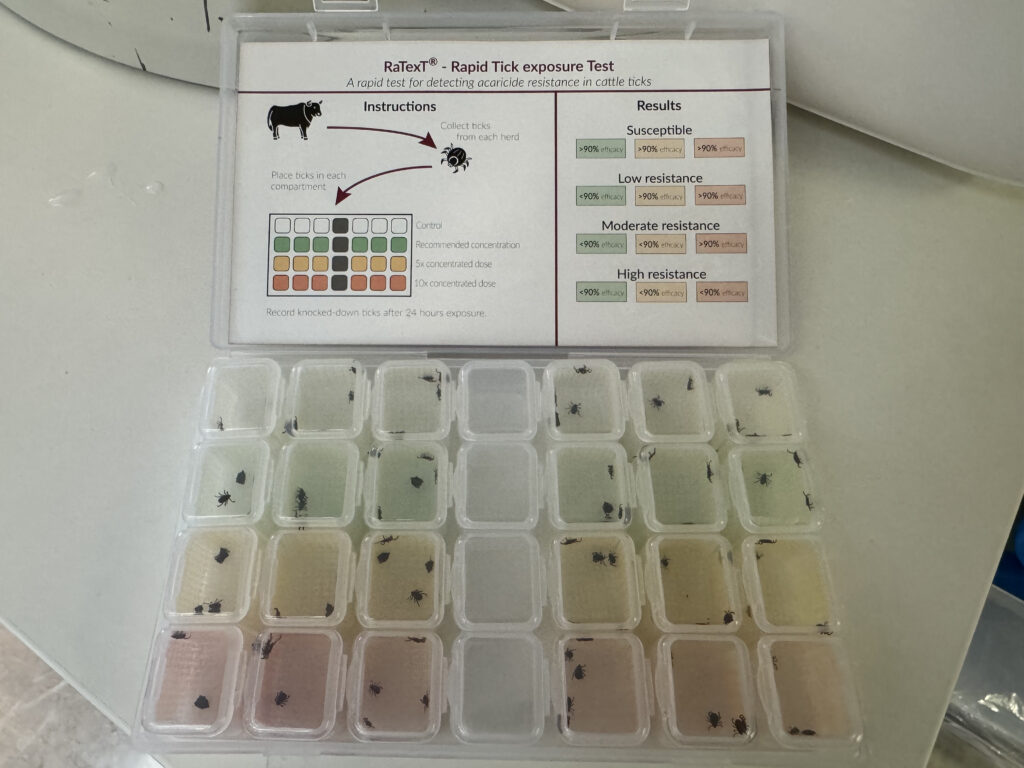
The Rapid Tick Exposure Test (RaTexT®) is a patented product and registered trademark of TBD-I.
The test can determine acaricide resistance using adult ticks, reducing the duration from several months, when tick larvae are used, to less than 24 hours. In RaTexT, partly engorged adult ticks are confined to small compartments and exposed to an acaricide-impregnated, specially-designed matrix directly after removing them from their hosts. The test is based on the principle that recently removed partly engorged ticks remain actively walking around to finish their blood meal. During this process, they are exposed to lethal concentrations of acaricide. This type of exposure mimics the behaviour of ticks that embark on an acaricide-treated host.
RaTexT also monitors resistance in the brown dog tick, Rhipicephalus sanguineus, particularly for permethrin and fipronil and is used in epidemiological surveys wherein dogs from multiple owners are enrolled. RaTexT provides an answer within 24 hours, which leads to satisfaction with both producers and consumers.

This is a working station designed to handle larval ticks safely. The tray is filled with water and detergent, and double-sided tape is applied around the edges.

